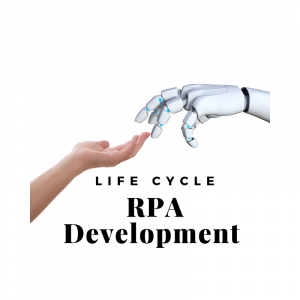Robotic Process Automation is no more a new entrant in the technological world. Digitalization is eating the fruits of RPA since long, and many reputed companies have doubled their profit with RPA in recent times. It brings us to one question of whether RPA requires any life cycle to persist the growth and development. RPA is entrusted with a software model, and unlike others, it also has a development life cycle.
The stages of RPA development life cycle –
Any life cycle cannot be completed without following specific stages, and similarly, RPA has to follow the same rules too. Let us begin with discussing the vital stages of Robotic Process Automation development life cycle individually.

Discovery –
It is the first stage of the development life cycle of RPA and can be further divided into two phases – assessment and implementation.
Solution Design –
This is the second stage of the development life cycle of RPA. It can also be said as the documentation stage of RPA as well. Here the documents are prepared along with the drafting etc. and henceforth marks the beginning of RPA cycle. The list of documents includes – Proceeds design, Solution design, and technical design.
Implementation –
This stage can be said as the beginning of the execution of the RPA development.
UAT –
During these steps, the result is checked, and a verification report is submitted, including the defect management and deployment plan.
Run –
This is the final step when RPA starts to perform. Here certain things are required to be checked like client readiness, checklist, and daily reports of execution.
Maintenance and support –
At this stage, based on the execution report, changes and benefit tracking are done. Accordingly, the script is updated and redeployed in case of any issue found.
The arena of Robotic Process Automation has escalated from past many years are as now people and organisations are showing a keen interest in it. RPA in simple words can be replicated as an automaton of human-oriented work. The tasks that require humans to be indulged for long can now be replaced with accuracy with the help of RPA.
RPA does not require complex integration with the IT architecture; instead, its primary purpose is to ease out the workflow automatically. The focus lies on replacing the repetitive work and can collaborate with applications, websites etc. All it needs is the commands instead of complex coding.
*
Be the first to comment.